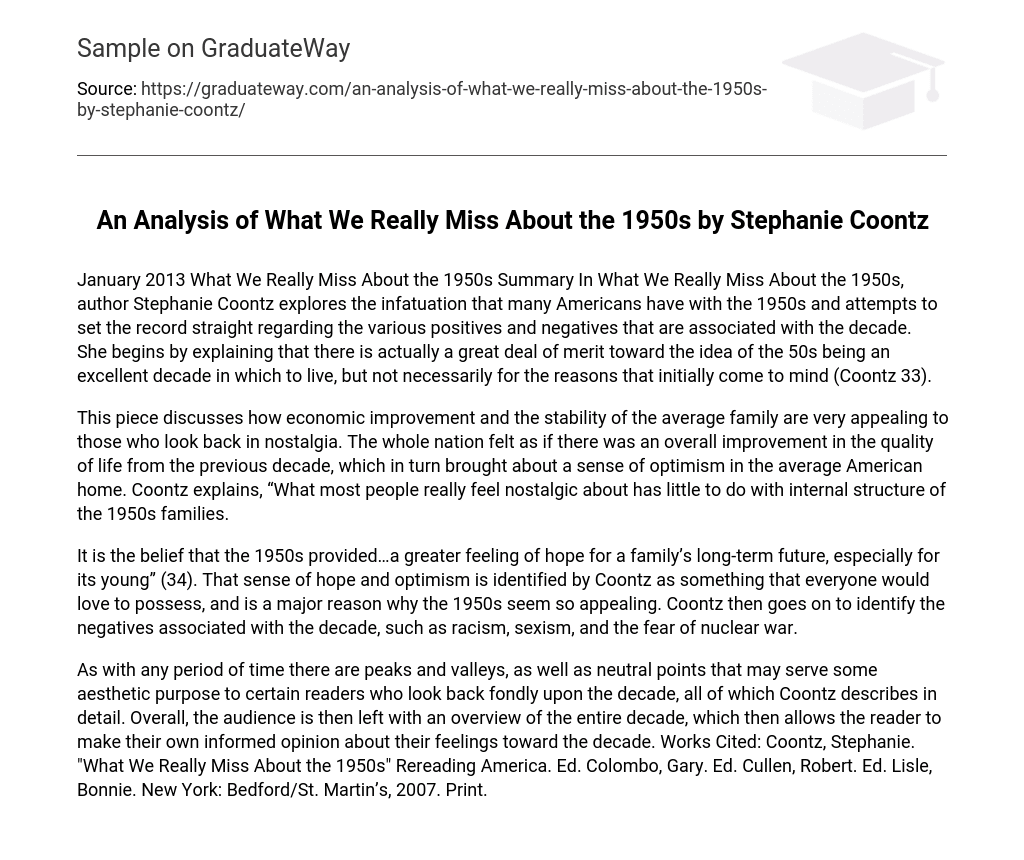January 2013 What We Really Miss About the 1950s Summary In What We Really Miss About the 1950s, author Stephanie Coontz explores the infatuation that many Americans have with the 1950s and attempts to set the record straight regarding the various positives and negatives that are associated with the decade. She begins by explaining that there is actually a great deal of merit toward the idea of the 50s being an excellent decade in which to live, but not necessarily for the reasons that initially come to mind (Coontz 33).
This piece discusses how economic improvement and the stability of the average family are very appealing to those who look back in nostalgia. The whole nation felt as if there was an overall improvement in the quality of life from the previous decade, which in turn brought about a sense of optimism in the average American home. Coontz explains, “What most people really feel nostalgic about has little to do with internal structure of the 1950s families.
It is the belief that the 1950s provided…a greater feeling of hope for a family’s long-term future, especially for its young” (34). That sense of hope and optimism is identified by Coontz as something that everyone would love to possess, and is a major reason why the 1950s seem so appealing. Coontz then goes on to identify the negatives associated with the decade, such as racism, sexism, and the fear of nuclear war.
As with any period of time there are peaks and valleys, as well as neutral points that may serve some aesthetic purpose to certain readers who look back fondly upon the decade, all of which Coontz describes in detail. Overall, the audience is then left with an overview of the entire decade, which then allows the reader to make their own informed opinion about their feelings toward the decade. Works Cited: Coontz, Stephanie. “What We Really Miss About the 1950s” Rereading America. Ed. Colombo, Gary. Ed. Cullen, Robert. Ed. Lisle, Bonnie. New York: Bedford/St. Martin’s, 2007. Print.





